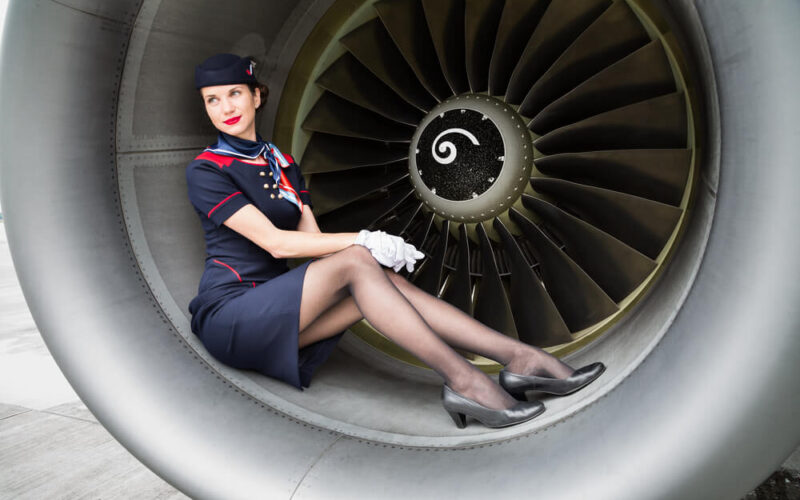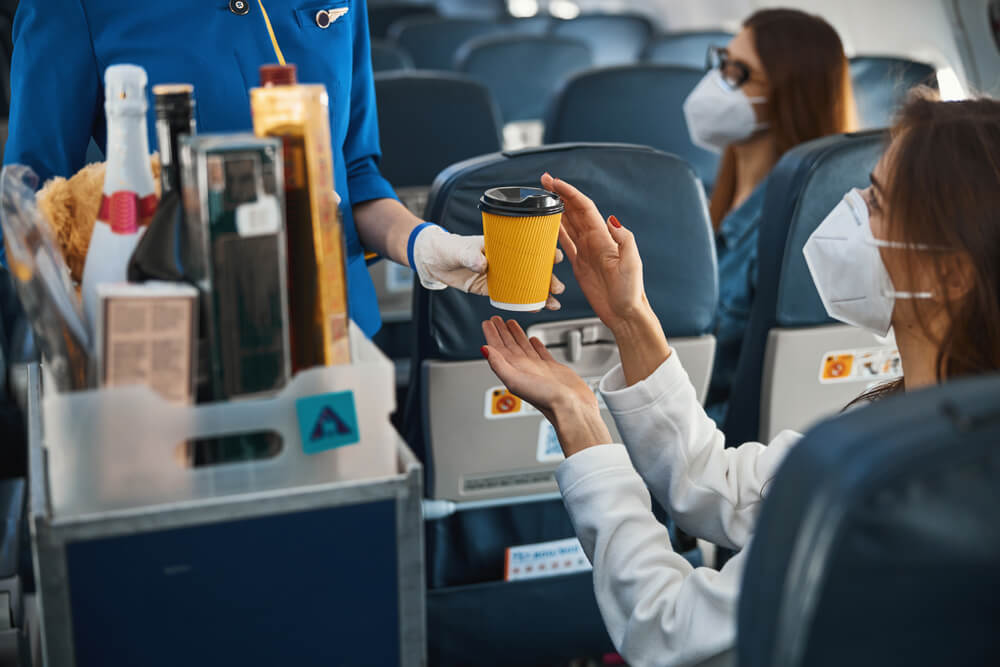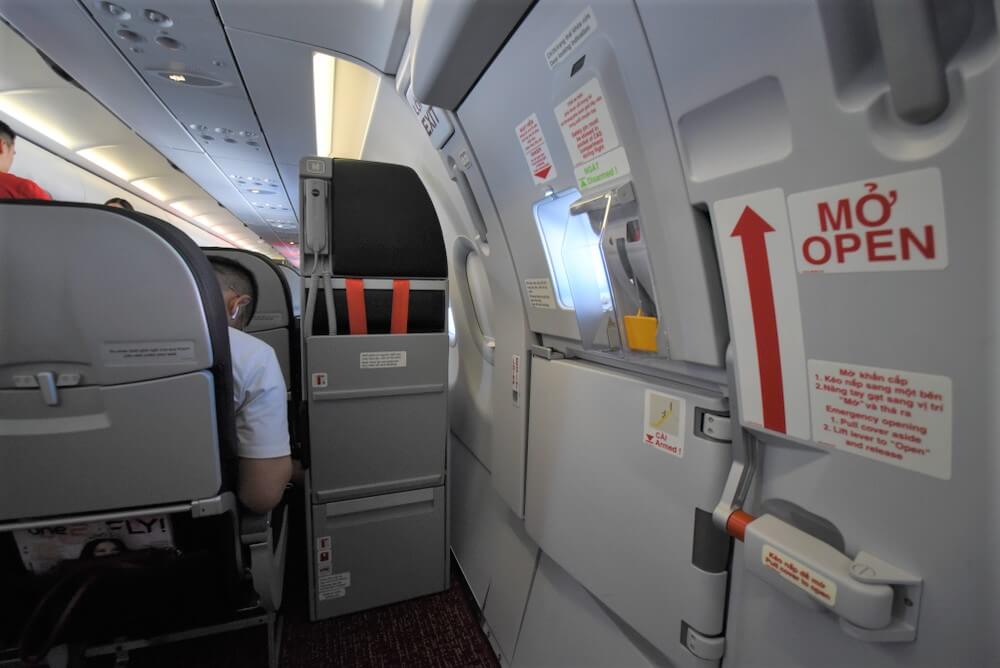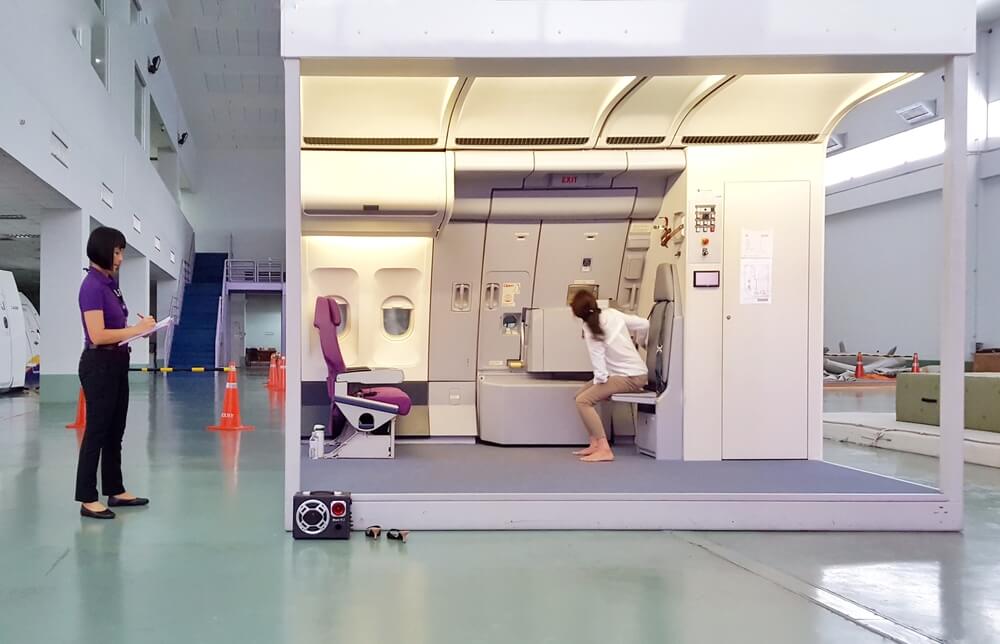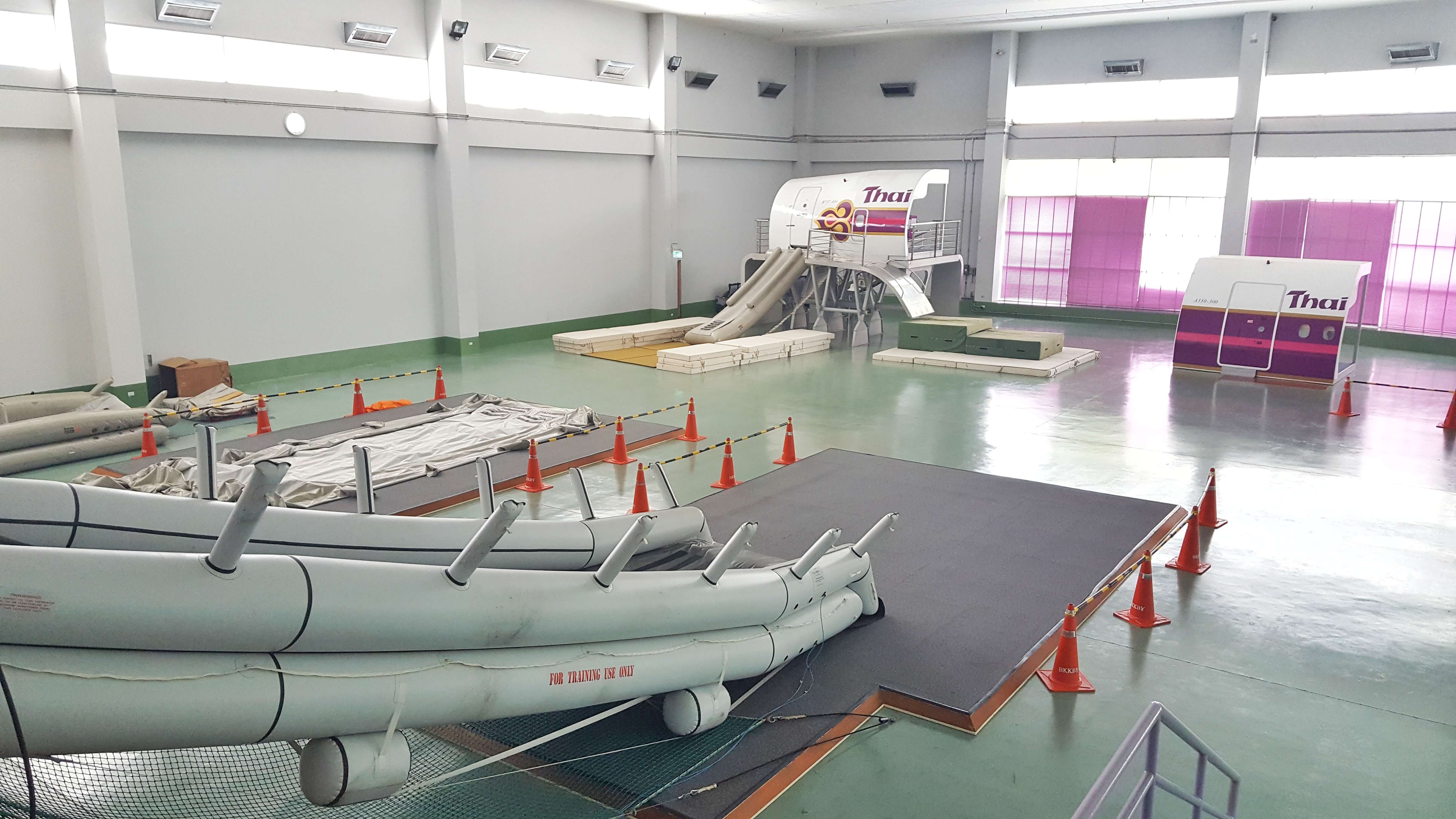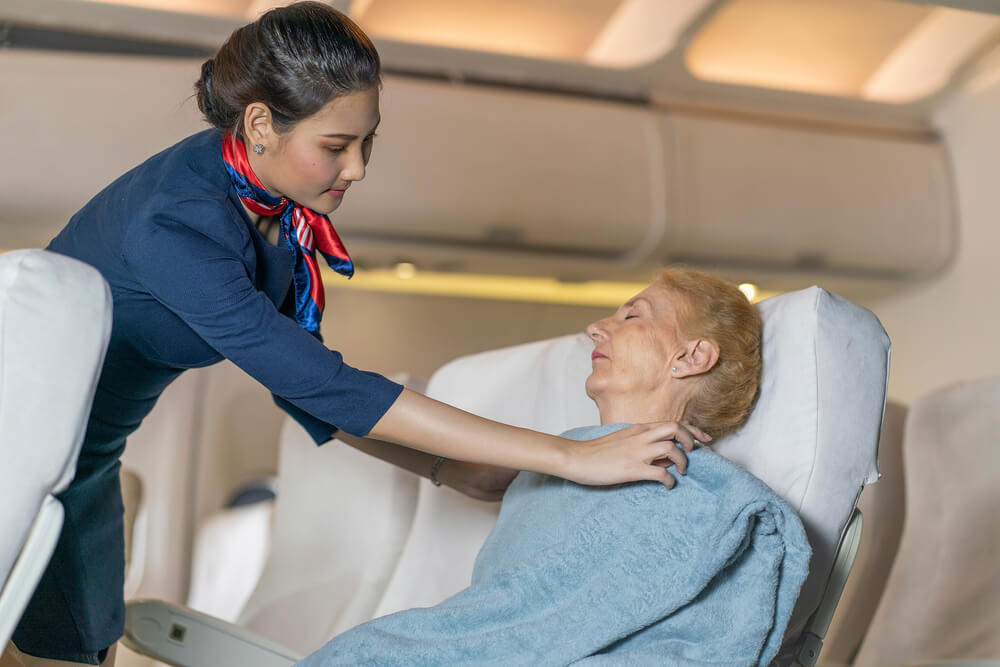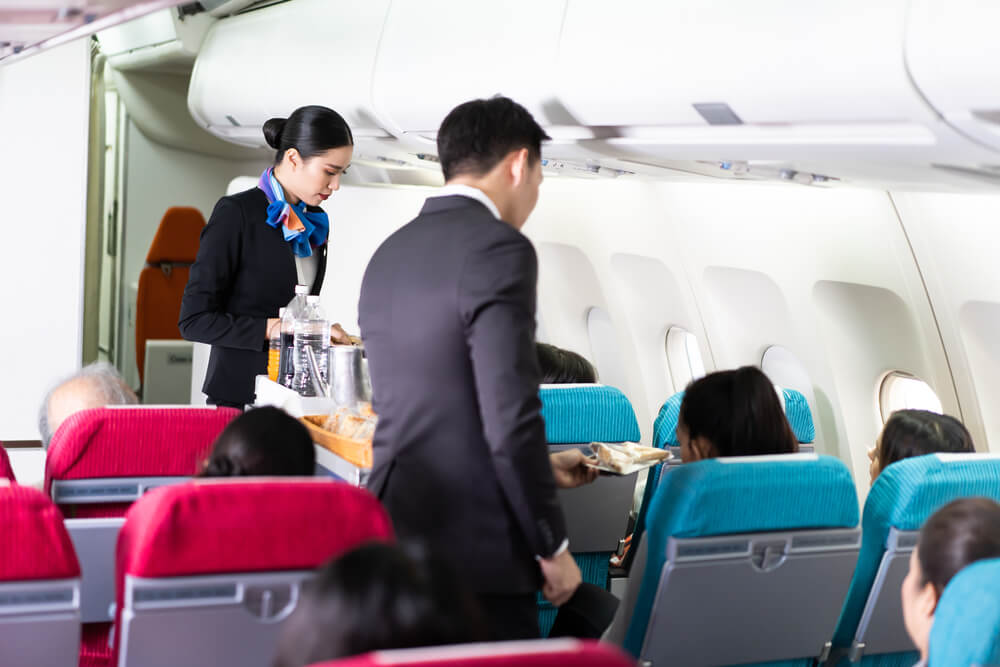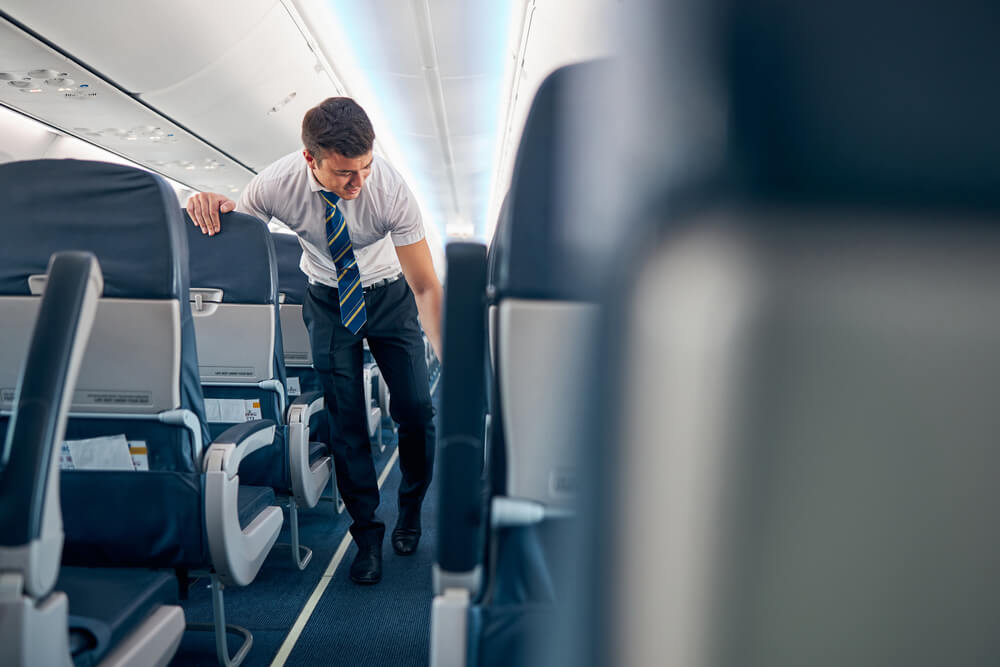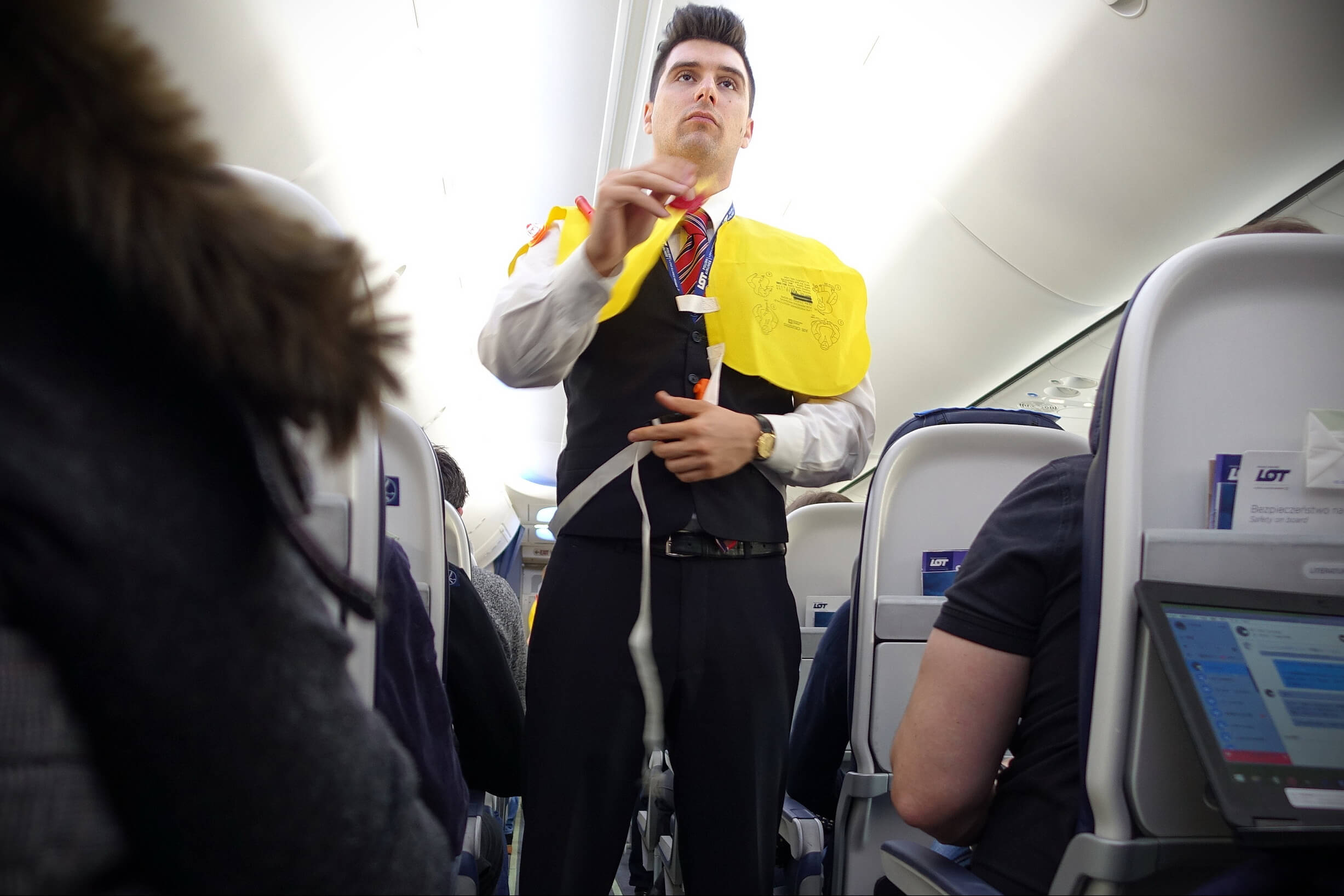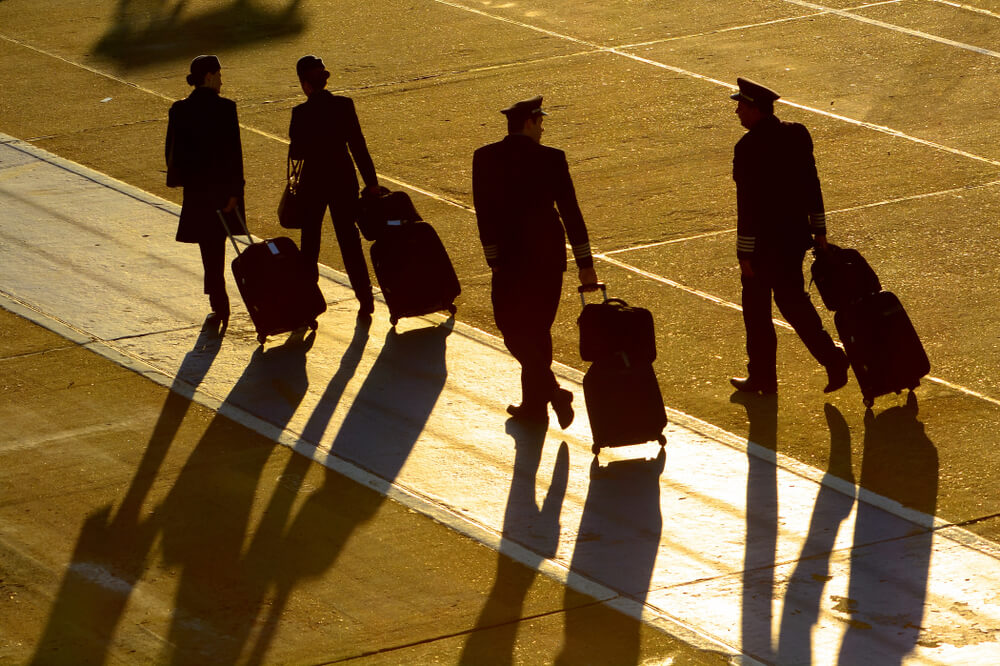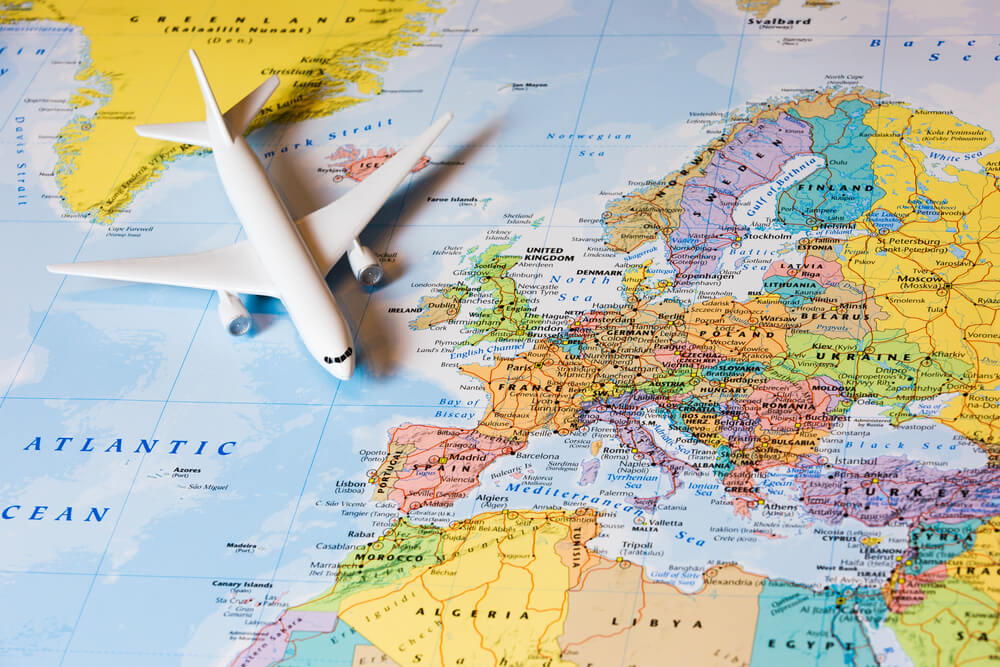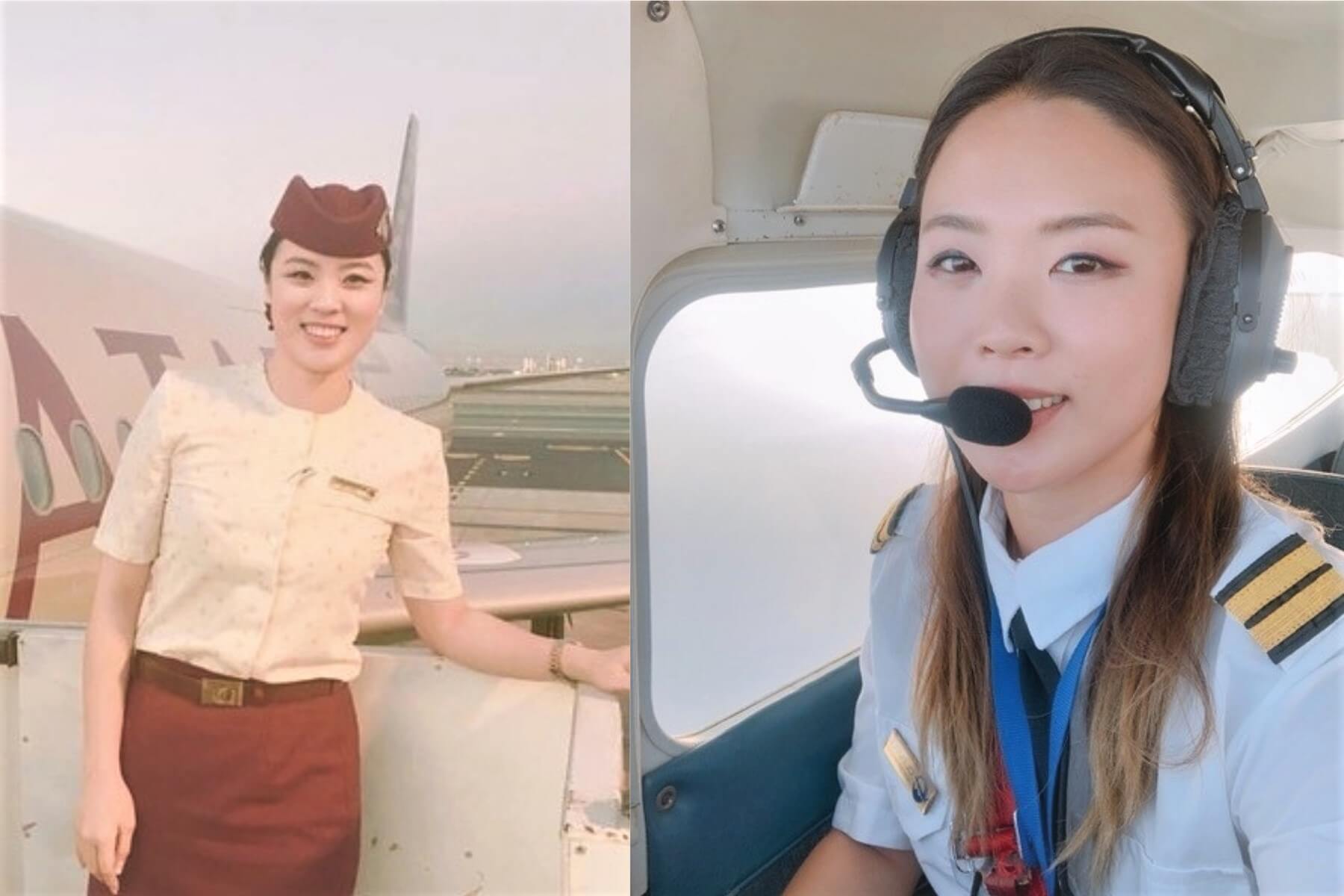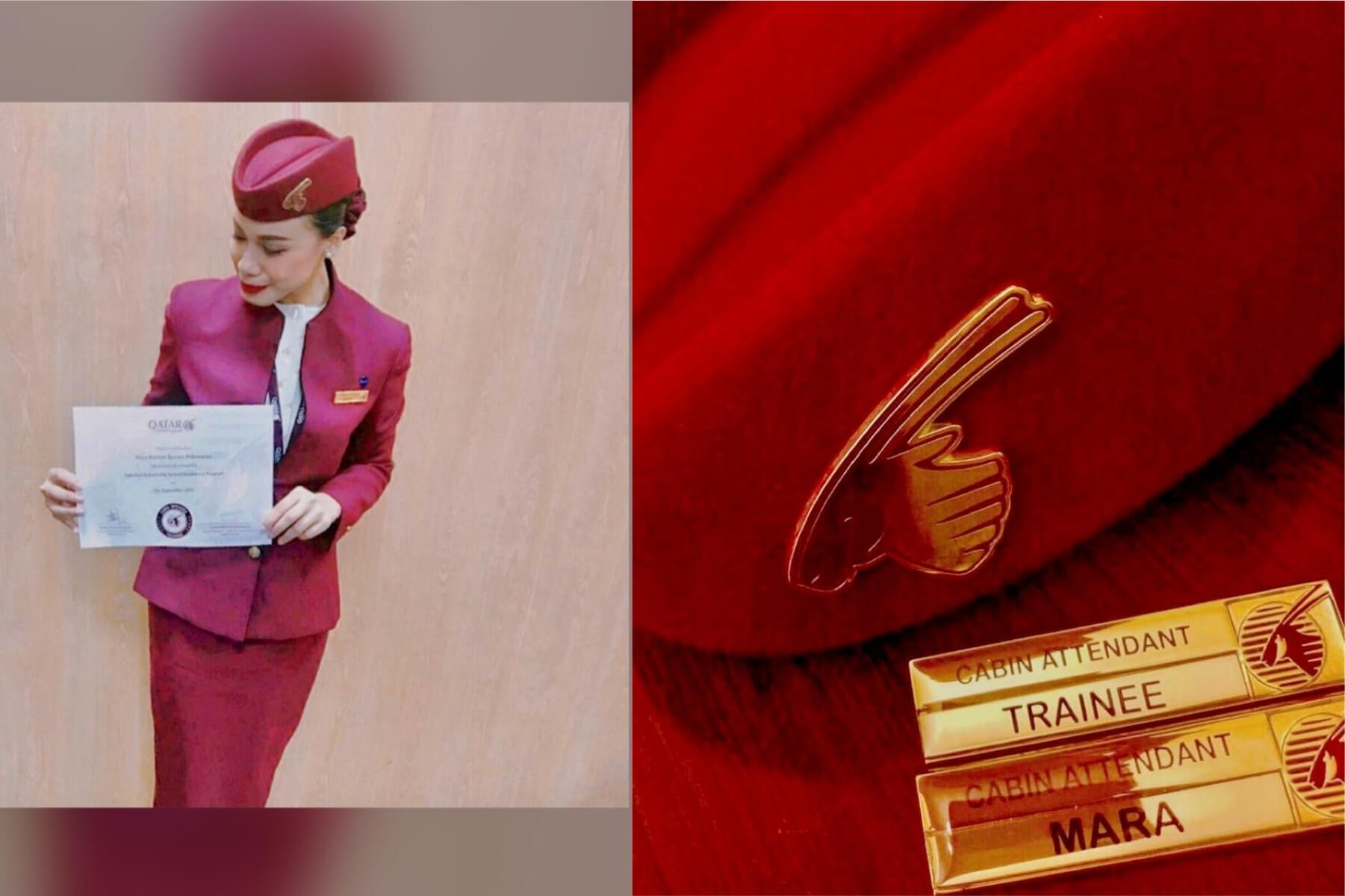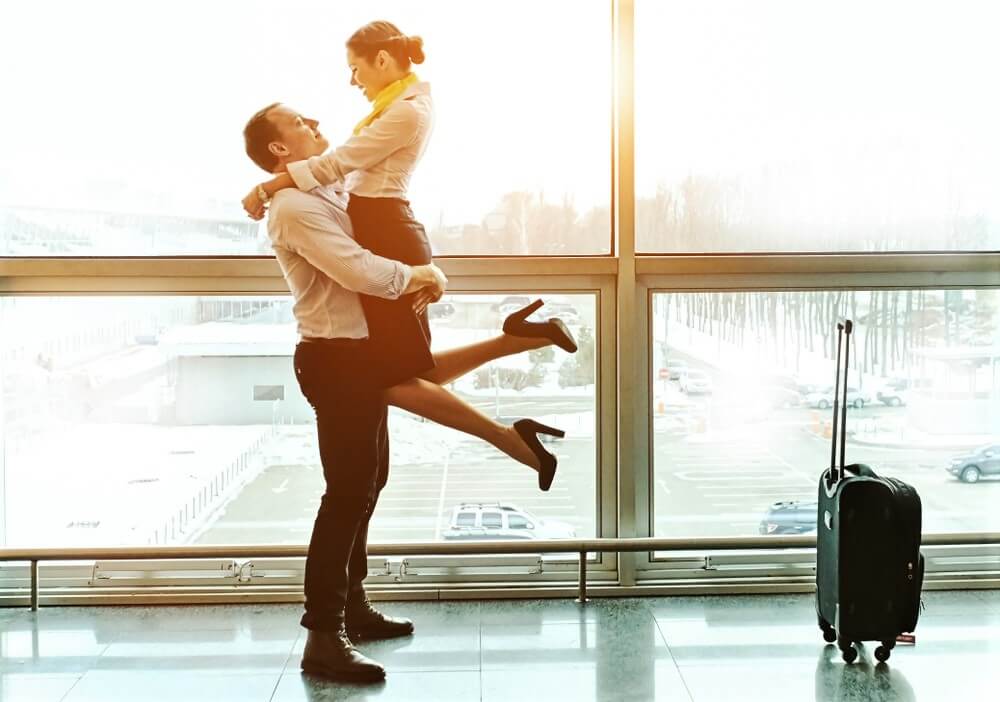There are many misconceptions about flight attendants. Some can be explained, others are downright ridiculous at times. Common stereotypes and myths surround the job, lifestyle, and career of a flight attendant, but often have nothing to do with its reality. While some misleading images are a result of the development of the cabin crew profession through history, other false impressions have sprung from ignorance that often surrounds cabin crew duties. Aviation is objectively a mysterious industry to those on the ground, and many people simply don’t understand what passenger service entails.
The waitress in the sky and rigorous training
Unfairly, the role of the cabin crew is often associated with that of a glorified waitress in the sky. This seems to be the most common stereotype, which can lead to passengers not regarding them as safety and security professionals.
Although the flight attendant job description contains greeting, assisting, serving, and communicating with passengers onboard the aircraft, it also includes responsibilities related to safety and security. Once hired as a cabin crew member, the flight attendant must participate in three to six weeks, and in some cases, up to six months, of specific training provided by their air carrier.
Jordan Hazrati, an experienced flight attendant who used to fly with British airline Virgin Atlantic, believes that passengers have garnered false impressions when it comes to the duties and responsibilities of the cabin crew. Additionally, Jordan also points out that many people are ill-informed about crucial safety accountabilities held by cabin crew onboard aircraft.
She continues: “I think this could be rebutted by understanding everything that the cabin crew does on a flight. For example, not only do they have to understand the systems onboard aircraft, including emergency equipment, technical systems, and medical equipment, but they have to provide impeccable service with a smile, when circumstances may be incredibly difficult, such as during the middle of the night on a tough roster pattern, while also being ready at any moment to react to an emerging situation onboard, which could be anything from security, safety, to medical.”
Depending on inner airline procedures and policy, flight attendants must perform specific daily routines as applicable for the operated aircraft type. Alongside these actions, flight attendants also need to fulfill their main responsibility of undertaking all necessary safety and security precautions during passenger embarkation and disembarkation. The constant reporting of any irregularity observed is also assigned to the cabin crew. Additionally, crew members are also required to immediately react to any irregular, emergency, or medical situation in accordance with airline procedures and special training given.
According to the Federal Aviation Administration (FAA), cabin crew members regularly undergo several types of training depending on their experience level. For instance, when a cabin crew member is newly hired by an airline, they are required to complete introductory training in the particular cabin crew training academy. The course includes a description of the general safety duties and responsibilities of flight attendants as well as appropriate portions of the carrier’s operating manual. In addition, and depending on a particular airline’s rules, non-qualified flight attendants must undergo initial training where they are instructed about general aviation subjects alongside specific instructions about the aircraft.
Meanwhile, those who are already experienced but aim to transfer from one air carrier to another, are required to complete the transition and differences training course necessitated by the variance between the aircraft of the cabin crew member’s old and new operator. For example, flight attendants who are qualified to work on the Airbus A320 aircraft must complete transition training on the Boeing 737 jet before they would be allowed to perform their duties on a different aircraft.
Sometimes an airline employer asks/orders cabin crew members to complete Differences or Upgrade training, where flight attendants are introduced with specific differences of the same model and series aircraft. For instance, when the doors on different aircraft variants are the same but located in significantly different places, the cabin crew will undergo a course highlighting this change.
Cabin crew are also required to periodically undertake and pass Recurrent training. Aviation regulators dictate airlines must ensure flight attendants are adequately trained and sufficiently proficient to work on the particular type of aircraft and position. During this training, flight attendants complete both aircraft type-specific and airline training elements, including both theoretical and practical training modules.
Recurrent training usually includes a course of simulated operation of normal and emergency exits for passenger evacuation as well as donning of life vests, portable oxygen bottles (POB), protective breathing equipment (PBE), and aircraft surface contamination procedures. The European Union Aviation Safety Agency (EASA) determines that such training must also contain emergency procedures training, including Pilot Incapacitation procedures and Crowd Control, evacuation and safety procedures overview, incident and accident review, Crew Resource Management (CRM) training, and a course of first aid.
In addition, flight attendants update their knowledge and skills of the use of flight crew checklists, operation of other exits, including flight deck windows, as well as the use of life raft or slide in the aircraft, and complete fire and smoke training together with normal and emergency procedures for Special Categories of Passengers (SCPs).
But the most crucial knowledge is gleaned from Emergency training, which contains instruction in emergency assignments and procedures, individual instruction in the location, function, and operation of emergency equipment, instruction in the handling of emergency situations, review, and discussion of previous aircraft accidents and incidents pertaining to actual emergency situations, alongside emergency drills.
And finally, once operational procedures training is completed, flight attendants are asked to complete a course of service training, where they are taught to focus on passenger needs, intercultural skills, as well as above-average communication and culinary knowledge.
A role for women only
It’s common to think that gender equality has become a lot more progressive. However, when it comes to the aviation industry, in some senses, there is still a long way to go. It’s still widely believed that women are more suited to be flight attendants than men. Such misinformation often stems from the portrayal of cabin crew during recent decades.
Paradoxically, the world’s first flight attendant was actually a male steward called Henrich Kubis, who began assisting passengers during German air carrier DELAG operations onboard zeppelin airships in the early 1920s. Back then, women were unable to build a career in aviation. A decade later airlines preferred to hire female crew members. United Airlines was the first carrier to initiate this change when they hired Ellen Church, the first female nurse flight attendant in 1929, and many airlines followed in their footsteps.
The companies were strongly concerned about the health of travelers during the flight and believed that using nurses as stewardesses would help to maintain passenger health and comfort. The carriers also assumed that service provided by physically attractive women would significantly improve customer satisfaction. And so, began an influx of female applicants who helped to create the basis of cabin crew today.
However, during World War II, a sharp increase in the demand for medical workers in military units saw a decline in hiring female nurses as cabin crew. This lack of stewardesses with a medical education encouraged the airlines to change their requirements for service staff and they began to hire young women without nursing experience instead.
While carriers continued to hire female staff for many more decades, the situation significantly changed in the 1970s. The trade unions gained more traction, and the role of the stewardess began to alter in line with the fight for gender equality. Most notably, in a landmark 1971 decision, where Celio Diaz Jr. of Miami claimed his two applications for Pan Am were rejected on the basis of gender, the US Supreme Court ruled that airlines could not discriminate against men.
Following a new non-discrimination policy, air carriers began to hire more men for passenger care duties, and with it came the need for a non-gender specific term to describe the profession. And so, the gender-neutral term ‘flight attendant’ was created.
Today, FAA Aeronautical Center data suggests that pre-pandemic the majority of cabin crew members in the United States were female (79.2%), while the remainder of the staff were male (20.8%). The statistics imply that men rarely opt to become flight attendants as long-term careers.
But Gabriela Andrejeva, a former flight attendant at the Lithuania-based ACMI and charter airline, believes that these significant differences in gender diversity numbers are not related to the modern airline’s policy.
Gabriela says: “There are fewer male flight attendants than females in the industry, but it doesn’t mean that men are not allowed to do this kind of job or get discriminated against in other ways. I think it is more of their personal choice to work in other positions instead of being cabin crew members.”
“A few years ago, my brother went to the airline recruitment day event to apply for a cabin crew member position on equal terms as the rest of the participants. And he had successfully worked for the company as I had until the pandemic. Usually, male cabin crew members hold the same positions in the airline and perform exactly the same duties and procedures as females do. Besides, male flight attendants need to follow strict grooming requirements, as women do. As far as I have noticed through the time in the airline, we were all treated and paid equally.”
Repeated routes
Travelers may also presume that flight attendants always fly the same routes and visit the same destinations regularly. However, the option to do so is extremely rare and reserved for cabin crew with high seniority.
Typically, depending on an airline’s business strategy and model, the companies have certain bases in various parts of the country or even continent. Depending on the level of seniority and the demand for operations from a particular airport, once the training is completed, an employee is assigned to a permanent base s/he will be flying from. Once in the base, the cabin crew member has a right to a transfer request and is allowed to switch bases if approved by the airline.
The flight attendant’s work schedule and routes depending on the airline and its destinations. Even if the company operates ultra-short-haul flights that usually take less than an hour, it doesn’t mean that cabin crew always fly the same routes. A crew member’s schedule varies every month and includes a wide range of operations, including shorter and longer flights as well as day and night shifts. Depending on the particular company, the crew operates either Turnaround Flights or Layovers, or they could be asked to do both.
Turnaround Flights, also known as there-and-back’ flights, usually include short routes where the aircraft crew does not stay over at their destination but fly back to the home base the same day. Following the European Aviation Safety Agency (EASA) issued Flight and Duty Time Limitations (FTL), flight attendants are allowed to fly 100 hours of the flight time in any 28 consecutive days, which sometimes results in a 12-hour-long workday shift. During such intense workdays, cabin crew perform multiple Turnaround Flights to various destinations. At the end of the shift, the crew typically returns to their base airport where they take a rest for from 10 to 12 hours.
Meanwhile, if cabin crew are asked to fly longer flights, which can take four and more hours, they stay in the place overnight or longer. After reaching the destination, the crew disembark the aircraft after their passengers and will remain at the destination. Such layovers are necessary to provide flight attendants and flight crew with an opportunity to rest between duties, so they do not experience fatigue from working long shifts. Although the crews could visit the same destination repeatedly, it does not mean that they fly identical routes every time.
Since 2015, when Jessica North, an Emirates flight attendant, joined the company and moved to its base in Dubai, the United Arab Emirates, she has visited a total of 74 various counties in the Middle East, South and North America, Africa, Asia, Europe and Central America. In an attempt to capture the vast geography of the states and cities she has visited, Jessica also started a personal blog.
Jessica says: “It’s a very interesting job and lifestyle. It’s crazy small how I think of the world now.”
Service staff and education stereotypes
The most insidious myth surrounding flight attendants is that they are poorly educated. This misconception could be fueled further by the requirements included by airlines in vacancy advertisements.
The minimum requirements to apply for a cabin crew position in the majority of commercial airlines in the United States and Europe include a standard age limit for an applicant of at least 18 years old as well as a need to have a high school or the equivalent diploma and work experience in customer service. Additionally, companies request that candidates have a valid passport and visa, and all applicants are subject to a background check and a drug test. Occasionally, employers prefer to hire experienced cabin crew members or a candidate with experiences in a related field, such as hotels or restaurants. But the requirements for education are usually minimal.
But instead of education level, air carriers focus on specific physical requirements for applicants, including minimum and maximum heights depending on a particular model of aircraft. Cabin crew members are required to sit in a jump seat and reach overhead compartments as well as be able to complete a range of physical tasks and possess excellent communication and problem-solving skills.
Although a university degree is not necessary to get selected by the company, it does not mean that the cabin crew members are poorly educated people. Cabin crew consists of people from varying professions, including medicine, education, finance, hospitability, transport, and many others. Sometimes, after joining the airline as a cabin crew member, a person decides to build their career further and even take a seat in the flight deck.
One such person is former Qatar Airways flight attendant, Jae Won Jess Shin who began her career as a cabin crew member. After three years, she decided to make a huge career change. Captivated by the skies, Jess resigned from the airline slightly before the pandemic and began furthering her career as an airline pilot. Jess says she never wanted to settle somewhere and do a routine job, that was why the aviation industry suited her perfectly.
In 2019, Jess’s friend, who aimed to become an aviator, asked her to join her when she was going to South Africa to check the courses. And for Jess it was an ice-breaking moment when the former flight attendant re-focused on her further career goals.
Jess was so captivated by the industry, that now her professional goal is to gain a seat in the flight deck.
She says: “When I saw the aircraft, I was like ‘I want to do that too, I can try it. I wanted to keep my life in aviation going.”
Meanwhile, a former cabin crew member, Mara Karisse Palamores, who had been working for one of the top airlines in the Middle East, has a slightly different story. Before joining the air carrier, she graduated from De La Salle University in the Philippines, her home country, where she studied Communication Arts. Soon, she realized that her chosen career was not what she wanted and ventured into sales instead, where she gained experience in Business Process Outsourcing (BPO). Sometime later, Mara decided to challenge herself and applied for a job in the skies, where she had been successfully working until the global pandemic.
She says: “I told myself that I should try to go for aviation, and I think I just manifested the thought that I would become a flight attendant. It is important to hold on to your dream when you have one. But the pandemic taught me how crucial it is for a cabin crew to be educated in other areas than aviation to be resilient.”
The role is incompatible with marriage
During the 1950s, which is considered the ‘golden age’ of flying, air carriers would hire female cabin crew members based on strict standards for physical appearance and age. The cabin crew job was viewed as a temporary job option at the time and all staff was to leave the industry by the age of 32, or earlier if they wanted to start a family. Marriage, pregnancy, and even weight gain meant that a cabin crew member could lose her job permanently.
Nowadays, depending on the region where a carrier operates, the age range from cabin crew members is 18 to 79 years old and there are no limitations regarding gender or marital/familial status. In the modern world, requiring staff to be single or unwed is extremely archaic.
However, marriage does alter certain aspects of the position. For example, a married attendant with a family could require a more stable job, including specific shifts and routes. This could suggest that married cabin crew members are less likely to apply for certain airline positions compared to their single counterparts.
On the other hand, testimony like that of Emirates flight attendant Violeta Baidi proves that in a modern world, air carriers no longer discriminate against their staff when it comes to age and marital status. Originally from Bulgaria, Violeta moved to Dubai eight years ago. While working for the air carrier, she met her future husband after joining the same airline just 20 days apart. The pair, who were both passionate about traveling, then got married. Since then, a couple of cabin crew members kept working at the same company until the COVID-19 hit the aviation industry.
Violeta says: “I’m grateful to my airline for those eight years full of adventures and traveling. I could never imagine that I would find my husband there and we both would work for the same company. The change to my marital status did not have any impact on [either of our] careers. I can say it was an amazing experience for both of us.”
Opting for a career as a flight attendant may not always be a breeze and it certainly comes with some challenges. The role requires a high level of personal responsibility, the ability to maintain onboard safety, and often involves dealing with unruly and discourteous passengers. Flight attendants often deal with unpredictability and are sometimes required to manage heavy workloads. It’s a profession that requires a great deal of skill, patience, and a sensible attitude and one that should command our respect.

